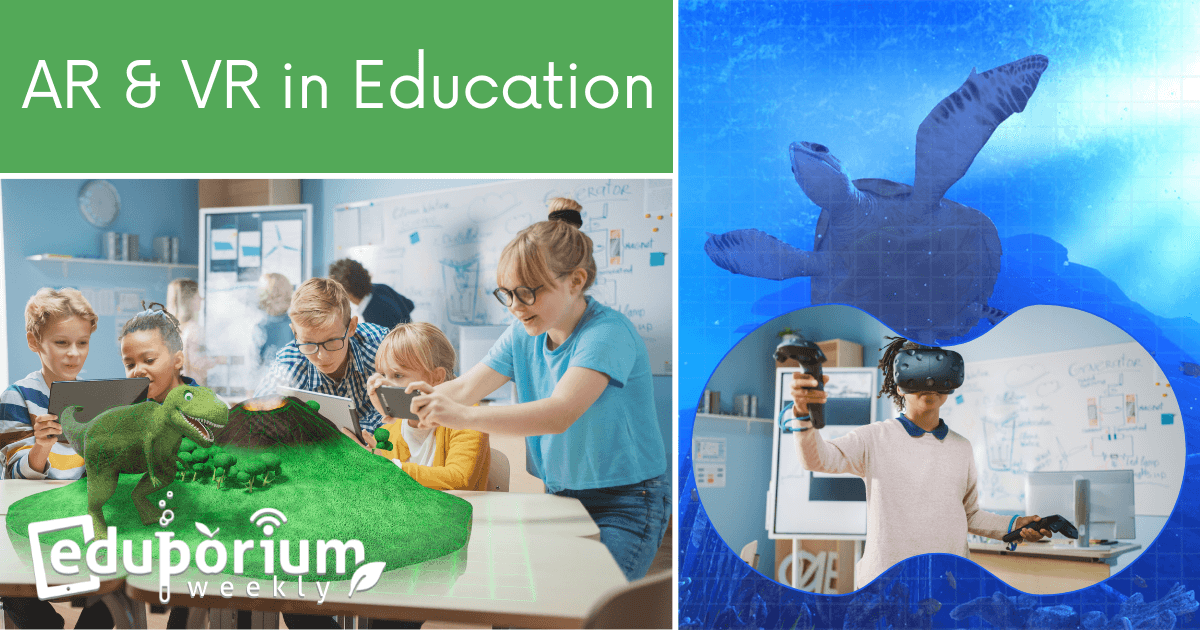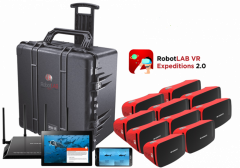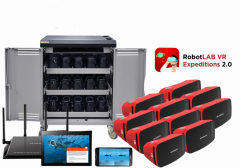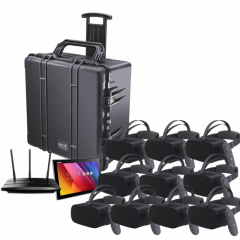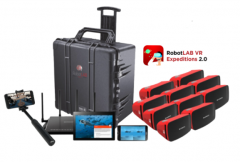When it comes to using AR and VR in education, there's a lot of ground to cover. In fact, most classroom instructors wouldn't have the first clue about where to start, what they'd need, or even how to describe the range of ways in which this type of learning can benefit students. It's also important to note that VR-based learning experiences aren't for everyone. Students who do actually enjoy them and feel comfortable with them, however, often see amazing boosts to their engagement and achievement. Since using virtual reality in teaching has boomed in popularity so fast, we are still learning so much about it. But, at the same time, we've already seen how immersive content and educational experiences help transform student learning.
Why AR and VR are Permeating Education
Some educators and experts continue to label AR and VR as the next big thing in education. Others argue, however, that it is already super impactful in certain areas—though the actual breadth of that impact is still likely off in the future. Virtual reality technologies are still developing and technologists are still learning a lot about why they're effective. Especially with students, including young children, these features differ greatly from what might make a VR gaming system appealing to an adult. In education, most people assume that AR and VR should be left for college. While it's certainly effective in helping educators create high-impact learning experiences at that level, the same is true for how it impacts students in the younger grades, too.
How virtual content impacts students.
There are two main ways in which AR and VR can impact the learning experience. The first is by providing students with an opportunity to immerse themselves directly in educational content and literally see brand-new things from previously unattainable points of view. That's nice for generating new excitement, helping them visualize key concepts, and boosting overall understanding of curricular materials. The second is by potentially providing them with hands-on, practical classroom experiences. While both the immersion and engagement arguments are viable across almost every grade level, the practical implications that VR tools can have are definitely geared more towards high school and college students. It's also effective in school CTE programs and for helping students learn about their passions rather than discovering new ones.
Using VR for more than engagement.
Not only is virtual reality impactful in teaching students about some of today's most intriguing industries, it can also sometimes help them gain practical experiences. There are enormous libraries of VR content and, depending on systems and subscriptions, it's often right there for teachers to access. And, as students get older and closer to careers, that content can become even more impactful. Some of the industries in which VR is more common or in which it can help students prepare to enter include medicine, humanitarian work, architecture, life sciences, teaching, engineering, and others. For students with hopes of going into any of these industries, AR and VR can help by making learning experiential, boosting retention, promoting self-learning, and serving as a training tool.
Immersive Learning with VR and AR
One of the terms that's most often associated with AR or VR—especially among us—is immersive learning. Immersive learning involves using a form of technology—usually virtual reality, specifically—for expanding experiential training opportunities by more effectively placing the learner directly within the content they are studying or the environments they are exploring. Immersive education is often more effective in high school and college but it's still beneficial for the younger students, too. When these kids are immersed in different learning scenarios, children begin developing certain skills they wouldn't get from traditional learning. Plus, it's a risk-free, safe, and effective option for them to increase knowledge in key areas.
Using AR and VR in immersive learning.
Like AR and VR themselves, the whole concept of immersive learning is also still very new. With so much effective technology available, teachers at all levels have adapted to the best ways of serving their students and preparing them for the future. Immersive learning goes beyond a typical learning experience and helps engage students by appealing to their various senses. Many children prefer visual, auditory, reading-based, writing-based, or kinetic learning. In traditional learning environments, they really only have the opportunity for reading- and writing-based learning. With that added immersion, however, educators can activate and engage their other senses, which leads to greater engagement and retention.
The benefits of immersive learning.
Immersion using AR and VR can enable educators to add new elements to the traditional curriculum and their traditional instruction. Using VR headsets, in particular, students can truly enter an immersive world. This is largely because the headset's technology blocks almost everything out. So, kids feel as if they have left the physical spaces they are actually in. Plus, like we've said, it's not just about the content either—VR allows students to truly interact with instructional experiences. And, as for AR tools, they also work well in supplementing traditional lectures. With either of these technologies, educators can increase engagement, cater to students with different learning styles, help make information more memorable, and control how students receive content.
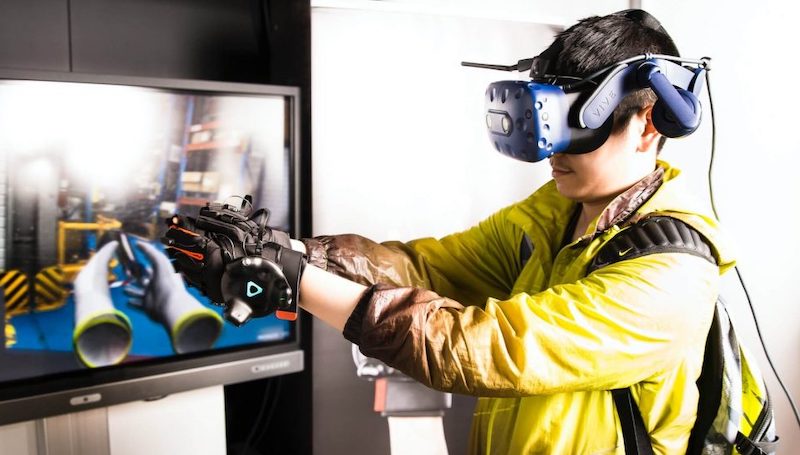
How Immersive Technology Expands Educational Possibilities
Whether it's AR or VR independently or a combination of each, classroom learning is facing a noteworthy disruption. Typically, we think of a disruption as something we would rather avoid but that's not always the case. In the case of AR and VR, disrupting traditional teaching also means creating new and more effective options. We've already talked about these VR tools boosting engagement and retention through purposeful immersion. VR and AR also help educators facilitate relevant field trips without ever leaving the classroom. Especially in the post-pandemic era, educators can use VR tools to re-energize instruction and how they bring abstract concepts to life with up-close excursions.
Reinventing common educational experiences.
AR and VR also enable certain educators to completely transform hands-on opportunities. One of the most common science experiences, for example, is performing a dissection. Not everyone loves actually sticking their hands inside of a dead animal or they might feel this isn't the most humane project and that's how AR or VR could help. Rather than putting them through the actual dissection, knowing that there are immersive alternatives can provide educators with another option. In many cases, they're still even able to learn about the key internal parts, explore bodily systems, and learn more about the transformations these animals go through. Plus, it could help save time, money, cleanup, and space in the classroom.
Using AR and VR to prepare for the future.
Besides classroom life, AR and VR also have viability in improving career readiness. We can even think of enhancing career training with VR similarly to enhancing classroom instruction using this technology. The immersive technology helps instructors simulate actual, on-the-job experiences and prepare students for how to interact in the workplace, which is especially beneficial for those who will soon begin their careers. Finally, AR and VR are also known to help students become more complete lifelong learners. Not only can they help spark a constant state of curiosity and desire for uncovering new information, but students could build other key soft skills as well. In simply using it to simulate real-world environments, they can work on communication skills, public speaking, and even business skills.
Using AR and VR in the Younger Grades
As we've discussed, there are two central benefits of VR in education: increasing engagement and offering training. For elementary students, the appeal of AR and VR is definitely more related to engagement. One may think that it is too early to introduce a powerful technology like this but, as long as teachers can use it correctly, there's not usually any major issues. Along with adding a fresh jolt of excitement, using VR in the elementary grades also creates some additional academic benefits. Whether visiting new places, exploring animal habitats, or watching historical events unfold, AR and VR can certainly impact elementary learning.
Putting learning and literacy into context.
As for some of the more impactful benefits, using VR can also help enrich student literacy skills. Whether with speaking or writing skills, students tend to discover a more robust voice as a result of the immersive and sensory benefits VR learning experiences provide. Particularly for students who struggle with writing inspiration, these benefits are impactful and quite immediate. VR also helps students with understanding the context surrounding their learning as well as making deeper connections. This context helps unlock deeper understanding and enables them to truly place themselves in another world.
How AR and VR help all students.
AR and VR also help improve outcomes for students who have specific learning needs. Children who have Autism, for example, often find it to be comforting when immersed in a new world, especially when they're first introduced to new things. Teachers can place specific content in their headsets and manage how they interact with what they're seeing. Though this is just one example, it's a powerful way to help students feel comfortable in new environments. Further, immersive learning could be truly transformational for bolstering retention. Because VR experiences are very vivid, it's nearly impossible for children to not remember what they consume. So, in this sense, AR and VR are particularly effective with students who struggle to focus.
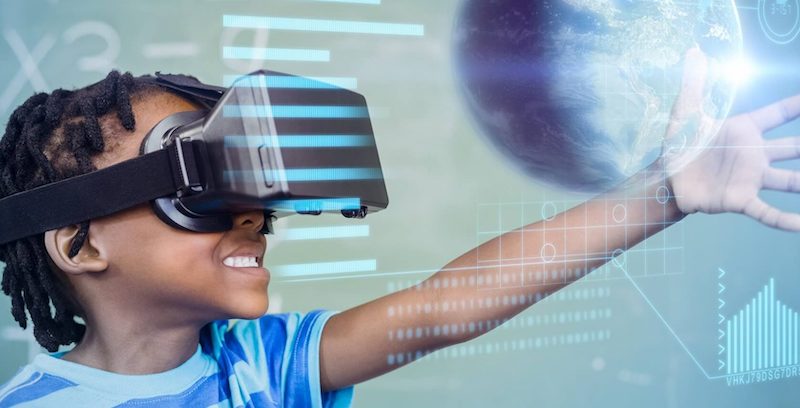
Statistics to Back Up AR and VR in EDU
Like with anything, educators and administrators need to know what their return is on a big investment. Though there are simplistic virtual reality tools for education, the most effective are those that are the most robust. Previously, this included systems like the Google Expeditions platform or even the Oculus Rift. As other options have faded away, we've certainly turned to the RobotLAB VR Expeditions 2.0 kits as our go-to recommendation. Though you'll notice some hefty price tags on these kits, it's important to remember all the things that are included. You're not just getting the VR viewers to pass out to students. The RobotLAB kits come fully stocked with the headsets, teacher tablet, a Wi-Fi router, the chargers, a warranty, and accessories. Plus, the headsets come with the Expeditions 2.0 app pre-loaded.
AR, VR, and learning loss.
According to an article posted on the XR Today website, there's quite a bit of data to back up the demand for using virtual reality in the classroom. Starting at the beginning, it's reported that as many as 54 percent of classroom teachers believe that increasing VR-based learning opportunities would prove beneficial. That number, however, is a little lower (41 percent) among parents. Much of what drives the feedback, according to the author, is the fact that students developed more robust tech skills while constantly using technology to find what they needed throughout the pandemic. Along the same lines, VR field trips and lessons are a great way to re-engage students after the last two years. With many of them still scrambling to reconnect, it could be a good time to invest.
Investing in virtual and augmented reality.
In terms of scale, experts are predicting a boom when it comes to VR in learning. According to an article from Fortune Business Insights, approximately $650 million was spent on VR equipment for education in 2018. They also predicted, however, that this number could reach as high as $13 billion by 2026. With such staggering figures being tossed around, it goes to show how impactful this technology could be in the right setting. Still, not every student has had the opportunity to try VR or AR though it is estimated that as many as 75 percent of them would like to. If school administrators have space in the budget for investing in new technologies, VR and AR systems might be worthwhile. Although they're still pretty new, they are showing they can tremendously impact student achievement and enjoyment in the classroom.
For the latest EdTech, STEM, and 21st century education news, follow us on Twitter and Instagram. Like us on Facebook, too, or sign up for our newsletter for our latest product announcements and offerings. If you have an idea for an Eduporium Weekly theme, send us a message on social media or comment below.



